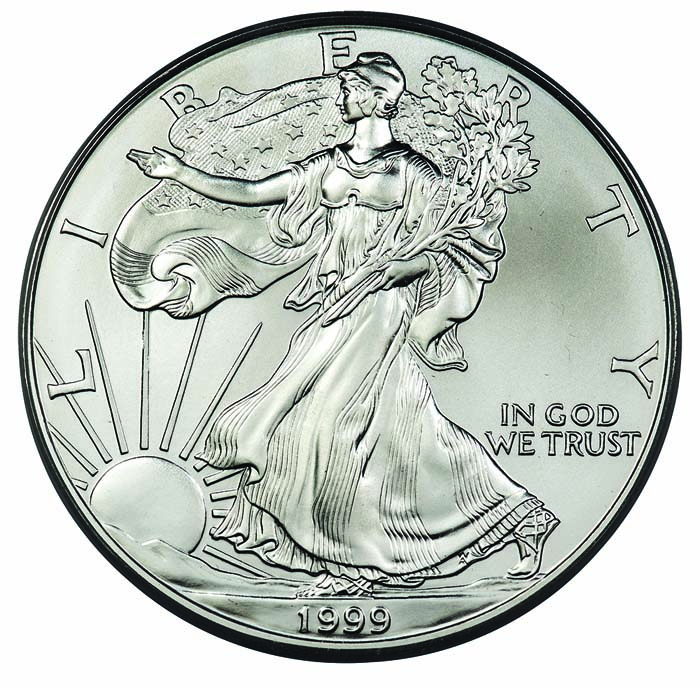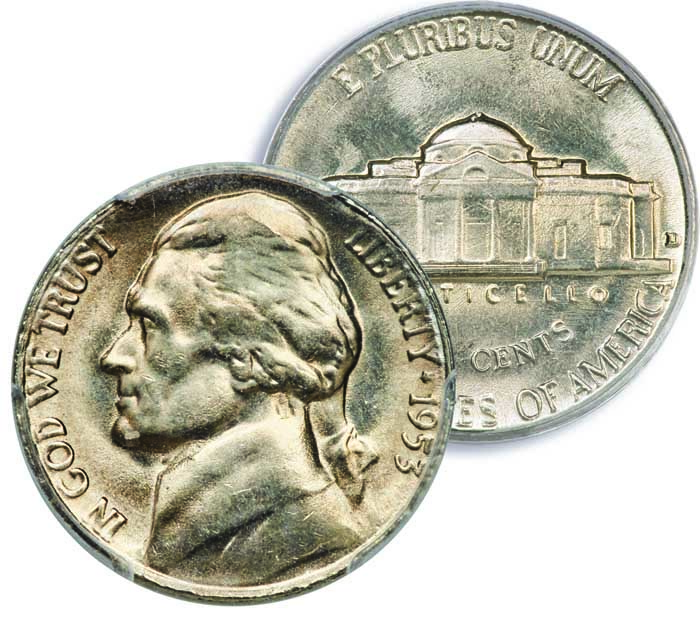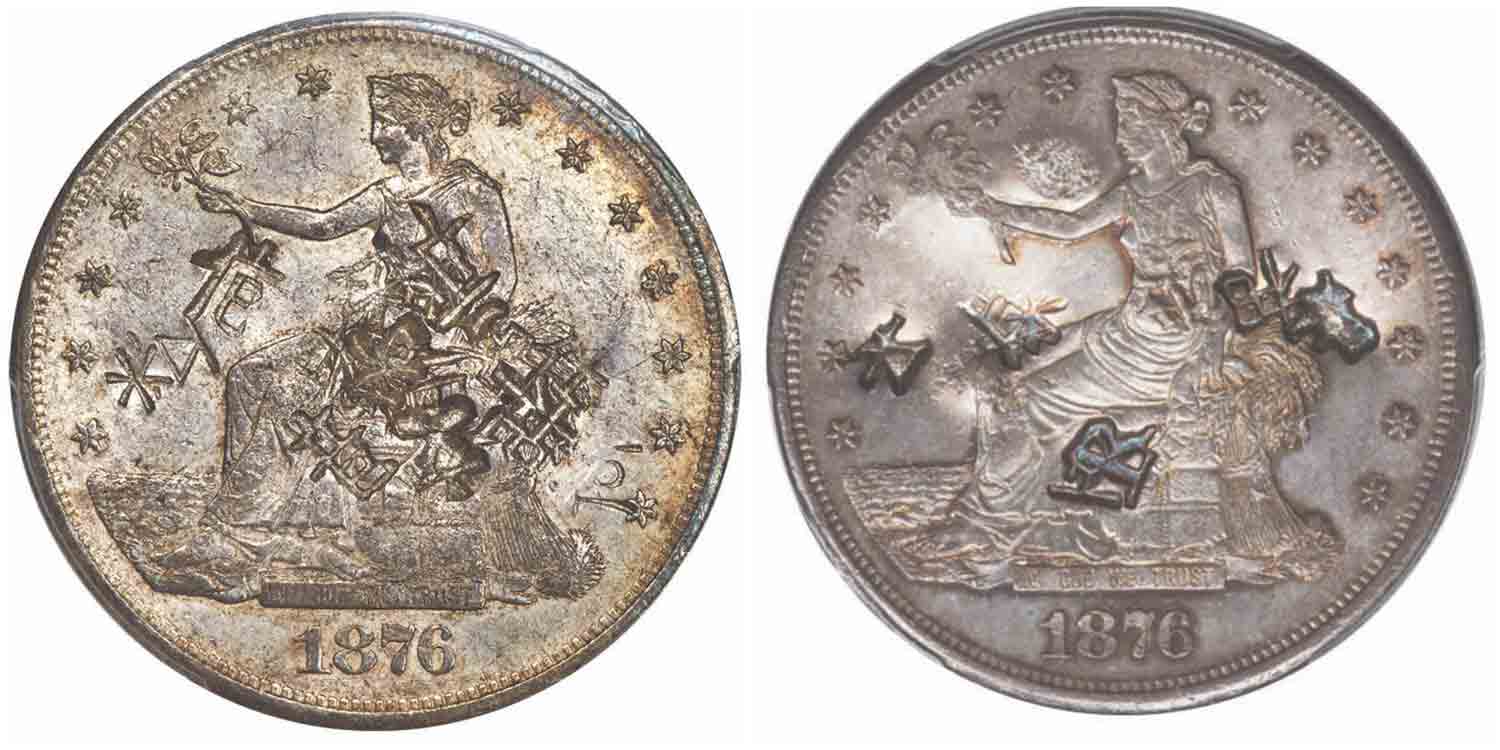Chop Marks on Trade Dollars: Should We Avoid this Damage or Embrace it as Part of the Coin’s Journey?
Coins with damage or major detracting defects are avoided like the plague by collectors, investors and dealers alike.
Coins with damage or major detracting defects are avoided like the plague by collectors, investors and dealers alike. This phenomenon is very much a reality for good reason. If a collector acquires a problem coin (deliberately or not), I am confident that when they later pull the coin out to admire it and reminisce about the buying experience, they will not look back on it as an exhilarating collecting experience nor feel that rush of endorphins while inspecting the piece. All they will be able to see and think about is that altered surface or other problem and their view of this prized possession will forever be tainted. This also goes for investors and dealers if their expectation is to profit on their coin purchase either tomorrow or in ten years, as any notable damage or cleaning to the coin will greatly diminish any potential profit margin. All numismatists know to stay away from problem coins. One of the strongest abilities or tools a numismatist can acquire is the aptitude for detecting issues in coinage from counterfeit detection to artificial toning to simple cleaning. Buy whatever coin you would like, I just highly advise against giving a problem coin the time of day.
With that said there is one kind of coin damage that I, and many others, wrestle with to this day and that is the Chop Mark. In numismatics, there is a fine line between original coins (coins that have not been altered since the time they were minted expect for genuine wear) and problem coins (coins that simply are not original in some form). Chop Marks for a long time have sat directly on this extremely fine line. There are people out there that hate them as they consider the Chop Mark as the ruination of a perfectly good coin. Then there are others who praise the Chop Marks as a historical part of the coins’ international journey. I find both arguments valid and had only made up my mind very recently as to where I stand on the subject. As much as I despise problem coins, I do not believe Chop Marks are a problem at all. I acknowledge that the Chop Mark itself is damage to the coin; but, as a collector myself, I enjoy a coin with a good, interesting story behind it. Is there a better story to tell others (even non-numismatists) than how your Trade Dollar traveled around the world and was authenticated and traded among Chinese merchants and is now a century and a half later in your possession? For the price these Chop Marked Trade Dollars go for, I do not think so.
All sorts of coinage have been chop marked across the world and throughout many centuries. The American Trade Dollar though is the most historically important, in my opinion, and certainly the most popular in numismatics today. These U.S. Trade Dollars were only minted in business strike format from 1873 to 1878 which is worth noting since I do not believe any proofs were used for the purpose of Chinese trade. China very much preferred silver to gold at the time. When merchants in China chop marked these Trade Dollars it was a process of confirming that the authenticity and silver content were correct and made it easier for the Chinese to trade them amongst themselves. The problem actually arose with Americans because when they received these marked up coins in return from China, they became suspicious. This suspicion actually resulted in Trade Dollars losing their value as legal tender in the U.S., making them the only circulating coin to trade at less than face value in our nation’s history.
The mutual distrust between the U.S. and China is well-known and nothing new, as even before Trade Dollars, China was extremely picky with what methods of trade or payment they would accept from America. This is why Trade Dollars are so large even compared to other silver dollars minted by the United States. Face value meant nothing overseas. The precious metal content was the key to opening up trade with China. The Trade Dollar was therefore created and named for its international use when trading with “silver loving” China. However, this idea was not flawless; most Chinese traders found these coins acceptable but a number did not. Overall the venture was successful resulting in $30 million worth of trade between the two nations. A fun fact is that $30 million dollars in the 1870’s would actually equate to nearly $600 million today. Every mintmark and date combination of these coins were sent to China over the six year period of business strike production out of Philadelphia, San Francisco and even Carson City. The event of American exportation and Chinese reception is where the chop mark took place. Each merchant had their own unique marking; and each time the Trade Dollar would change hands in China the next merchant would stamp the coin and so on.
Modern collecting of these Chop Marked Trade Dollars is especially intriguing, in my opinion, as these markings allow us, in a way, to trace the history and journey of the coin. That cannot be said for any other coin in the price range that you will find these Trade Dollars in. Which brings me to my next point. The price range on Chop Marked Trade Dollars is shockingly affordable, ranging from a couple of hundred to perhaps, a few thousand dollars for only the most rare and finest examples. The only caveat here for collectors is the 1878-CC Trade Dollar which is quite scarce and nearly impossible to locate with Chop Marks, for some reason. It is possible that this is because of the issue itself having a low mintage to begin with, along with a rumored melting of thousands of them. Overall, you can find deals on Chop Marked Trade Dollars just about anywhere you can find them. They are relatively inexpensive while at the same time being somewhat tough to locate both online and at coin shows (which I greatly miss due to the COVID-19 pandemic).
Dare I say Chop Marked Trade Dollars may even be an entirely untapped market with potential for exponential growth in value and popularity at some point in the future. I am not recommending anyone to hoard them and invest substantial amounts of money in them. What I am saying is why not do some research, collect a couple and see what happens in the future. It is a small price to pay for a priceless story and journey. Some potential proof that things are starting to turn around for these historical pieces of coinage is how they have gone from being deemed ungradable to now receiving full numerical grades from at least one prominent grading service. One final point that boggles my mind, and I am sure you will agree, is that these common date Trade Dollars are selling for the same price with or without the Chop Marks. Acquiring a piece of numismatic history with such an extensive and important backstory and a somewhat traceable journey, for zero added premium, is something to get in on immediately (always exercise a fair amount of financial caution, of course, unless you have a money tree in the backyard). To all collectors out there who value U.S. and world history, international trade and an opportunity to spark a unique and interesting conversation with just about just about anyone, then I say go buy yourself a Chop Marked Trade Dollar now. Do it before dealers realize they can and should be asking a hefty premium for these very special coins.

Download the Greysheet app for access to pricing, news, events and your subscriptions.
Subscribe Now.

Subscribe to RQ Red Book Quarterly for the industry's most respected pricing and to read more articles just like this.
Author: Chris Maisano
Related Stories (powered by Greysheet News)
View all news
On April 21st, Legend Auctions is highlighting the greatest set of Walking Liberty Half Dollars ever assembled in The Regency Auction 44 at the Bellagio Hotel & Casino in Las Vegas.

Good news to collectors and investors of silver and modern coinage. There are a number of American Silver Eagles worth thousands more than just their silver content. Here is what to look for.

Dig into your pocket or purse and you are sure to find the ever popular Jefferson Nickel. Believe it or not, there are a select group of these beauties that are worth a nice "chunk of change!" Read on to learn my picks of the 5 Jefferson Nickels worth five figures as well as some interesting history behind the series.









Please sign in or register to leave a comment.
Your identity will be restricted to first name/last initial, or a user ID you create.
Comment
Comments